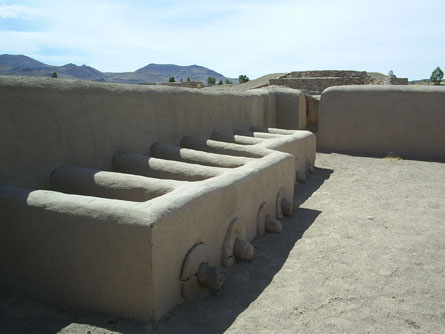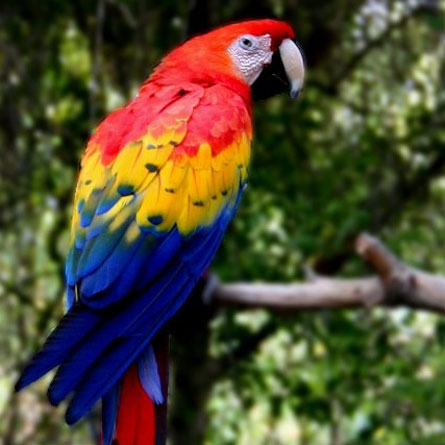Macaws bred far from tropics during pre-Columbian times
Colorful birds possibly raised for ceremonial and trade purposes long before Spanish arrival
A century or more before the Spanish set foot in the Americas, birds of a multi-hued feather were bred together in what’s now a desolate part of northwestern Mexico. That, at least, is the implication of a new analysis of bones of prehistoric scarlet macaws.


Inhabitants of Paquimé, a large settlement that flourished from 1200 to 1450 in what is now northern Chihuahua, raised scarlet macaws more than 500 kilometers north of the animals’ tropical homes, say anthropology graduate student Andrew Somerville of the University of California, San Diego and his colleagues. Ancient macaw breeders harvested the birds’ vibrant red, blue and yellow feathers for use in ceremonial garb and to trade with Native American societies in the southwestern United States, Somerville’s team proposes in an upcoming Journal of Anthropological Archaeology.
Evidence for scarlet macaw breeding at the arid Mexican site supports the idea that people bred exotic animals far from the animals’ native habitats long before the industrial age, Somerville says.
Ratios of carbon and oxygen isotopes in bones from 30 scarlet macaws excavated in the 1970s at Paquimé indicate that the birds mainly ate maize, Somerville says. In their tropical habitat of southeastern Mexico and Central America, a region also known as Mesoamerica, modern scarlet macaws subsist on a wide variety of food that includes fruits, seeds and flowers — but not maize.
As early as 300 B.C., Mesoamerican societies such as the Olmec and the Maya used scarlet macaw feathers for ritual and military dress. Prehistoric societies in the southwestern United States also obtained scarlet macaws, apparently via trade, from around A.D. 100 to at least 1150.
Some researchers have suggested, without direct evidence, that Paquimé residents bred macaws for trade with northern societies. Others suspect that Mesoamerican groups were the only macaw traders.
“Our evidence indicates that Paquimé residents developed technology for macaw breeding and did not have to rely on long-distance trade or close connections to Mesoamerica to acquire these prestige goods,” Somerville says.
Somerville’s group analyzed scarlet macaw bones from a collection of 322 of these birds excavated more than 30 years ago at Paquimé. Excavations also yielded bones of 181 birds from other macaw species and 56 adobe cages for macaws, many containing macaw bones and feces.
Carbon measurements indicated that the Paquimé birds ate plants adapted to dry regions, which at that time and place consisted largely of maize. Oxygen measurements indicated that all but one of the scarlet macaws drank water from the Paquimé area.
The one exception was probably an imported bird, Somerville says.
Somerville’s team provides groundbreaking evidence that the Paquimé macaws were not raised in the tropics, comments anthropologist Michael Whalen of the University of Tulsa in Oklahoma. But that doesn’t mean that extensive macaw breeding took place at the Mexican site, in his view.
“Prehistoric people could have bred macaws, but it’s unlikely that they did so on a large-enough scale to produce the Paquimé population,” Whalen says.
A constant flow of juvenile scarlet macaws may have been transported north from Mesoamerica, Whalen hypothesizes. Along the way, birds would have been fed maize and given water from local sources, producing chemical signatures different from those of tropical macaws.
Most imported birds didn’t live long at Paquimé and were replaced quickly, Whalen posits. Scarlet macaw remains at the site are dominated by juvenile birds that didn’t reach reproductive age.
Owners and breeders today find that macaws won’t reproduce unless fed a carefully balanced diet, Whalen notes. And male and female macaws are notoriously difficult to tell apart, he says, making effective breeding dicey.







